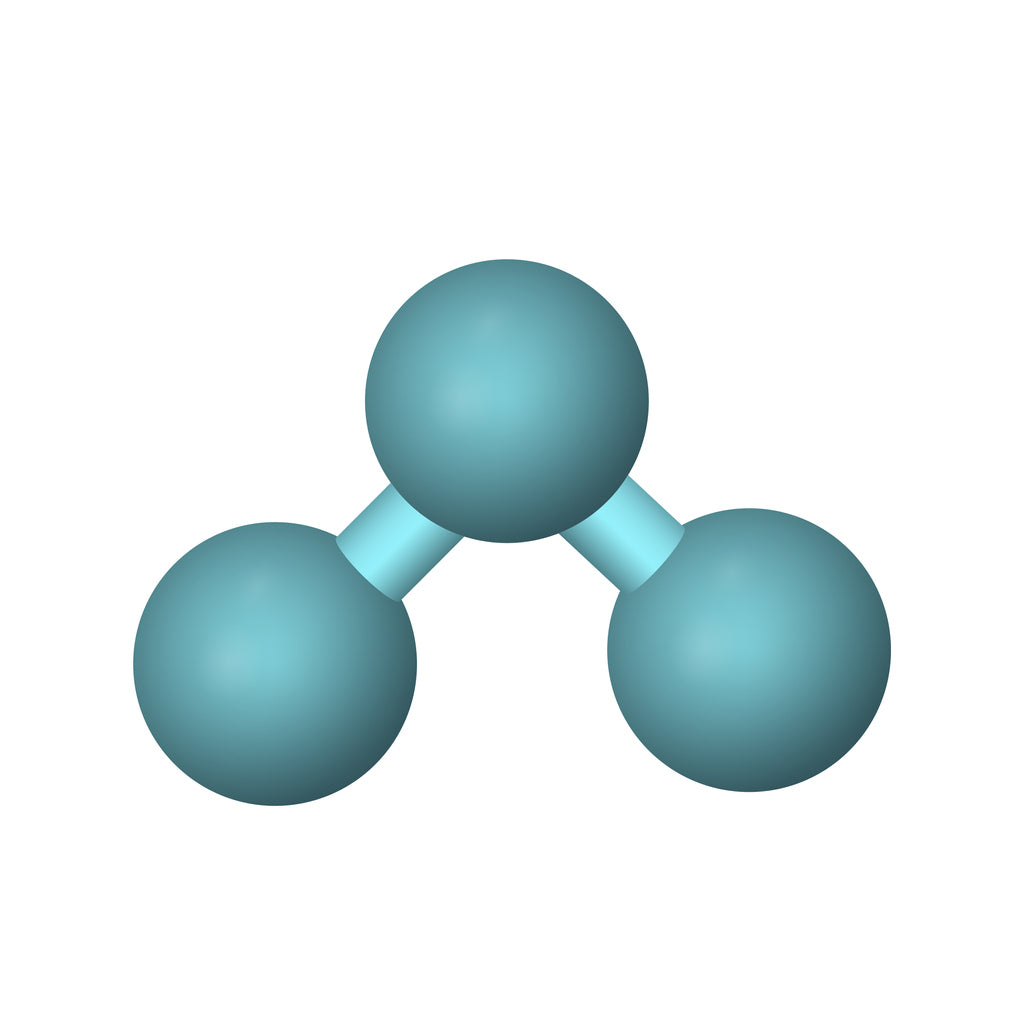Known as a respiratory irritant, ozone is a toxic gas that is unstable in nature and harmful to people, triggering health problems such as chest pain, coughing, throat irritation and more. Though some air purifiers may create ozone, either intentionally or as a by-product, Molekule devices have been tested and certified by third-party labs showing that Molekule does not generate ozone. In fact, these labs found that Molekule’s PECO technology reduces ozone concentrations in the air over time. This piece will discuss the standard testing parameters of the studies and demonstrate that Molekule does not create ozone.
Third-party scientific testing
Third-party scientific testing on Molekule’s PECO technology was conducted by Intertek, a Nationally Recognized Testing Laboratory (NRTL), and the University of Minnesota Particle Calibration Laboratory. The testing done by both labs has been integral to determining how control testing and its data results can determine ozone levels when passing through the PECO filter.
Intertek ozone test report on Molekule
The Intertek test report shows that Molekule does not increase ozone concentrations above background levels. Background ozone is ozone that naturally occurs in any given space and time. To carry out this testing, researchers recorded the change of ozone levels while Molekule air purifier was in operation. Researchers demonstrated how the ozone levels were not elevated by the purifier, regardless of whether the Pre-Filter and PECO-Filter were present or not. Data from both of these setups show that while the filters were in operation, the background ozone levels remained the same as without any filters installed—in other words, the filters did not increase the background ozone levels. Beyond proving that the PECO-filter does not emit ozone as a by-product, the data also shows that ozone concentration levels actually decreased at higher Molekule fan speeds while testing the filter.
Furthermore, Intertek is certified by the California Air Resources Board (CARB) to test air purifiers in the state of California. CARB can only pass indoor air cleaning products that meet a safety standard of generating ozone emission concentrations of less than 0.050 ppm, which means parts per million. Researchers use the units ppm to measure very small quantities of a contaminant by mass volume: the highest ozone level reached in this study rounded to 0.002 ppm emitted without the Pre-Filter and PECO-Filter installed; ozone levels reached 0.001 ppm with both filters installed, perhaps suggesting that the Molekule air purifier does indeed break down ozone molecules.
The University of Minnesota Particle Calibration Laboratory
To further determine the Molekule air purifier’s ability to positively impact ozone concentration, the University of Minnesota’s Particle Calibration Laboratory conducted tests to determine Molekule’s efficacy in eliminating ozone molecules. First, researchers ran a stage test that monitored Molekule’s PECO-Filter effect on normal room levels of ozone. This was followed by another stage of testing of PECO’s effect on high levels of ozone.
More dramatically, the second stage of testing gave us even more convincing evidence that PECO actively eliminates ozone molecules. This stage of testing consisted of two trials, each introducing a PECO-Filter into an area of artificially dense ozone concentrations. In the test study, high levels of ozone are pumped into a test chamber where the PECO-Filter was installed. The ozone was allowed to come to rest in the chamber for 10 minutes, after which the Molekule PECO-Filter was turned on for the remainder of the six hour tests.
The trial results show that when in use, the PECO-Filter decays ozone molecules from the air far more rapidly than normal decay rates when at rest.
Why ozone is harmful
Ozone is a highly reactive and toxic oxygen-based gas comprised of three oxygen atoms, while the typical oxygen gas we breathe is comprised of two oxygen atoms. When one of the oxygen atoms separates from ozone it reacts to any number of organic materials that not only include those outside our bodies, but inside our bodies as well. In fact, ozone can convert harmless VOCs into toxic VOCs.
Ozone generators are designed to emit dangerously high levels of ozone into the air of occupied, indoor spaces. These generators are typically used to help remove odors in an indoor space, however, they merely mask the smell. At high levels of concentration, ozone can damage lung tissue leading to aggravated reactions to respiratory ailments such as asthma and inflammation. Even at low levels, ozone can cause shortness of breath, headaches, and throat and lung irritation.
Why PECO is different from air purifiers that emit ozone
Air purifiers that produce ozone include ozonators, ionizers or those that use UV-C light. Ionizers use an electric charge that produces negatively charged ions and in so doing can generate ozone as a result. Air purifiers with an uncoated UV-C lamp produce ozone as a byproduct because UV-C is readily absorbed by oxygen gas in the atmosphere and can become ozone as a result.
PECO does not emit ozone as a byproduct because during the PECO process, UV-A is not absorbed by oxygen gas and thus does not become ozone. Instead, the UV-A light inside the unit is absorbed by the PECO-Filter’s proprietary catalyst coating to oxidize substances, breaking them down to harmless trace amounts of water vapor and carbon dioxide that is already present in our natural atmosphere.
In Conclusion
Molekule differs from other traditional air purifiers because it destroys particulates and allergens, instead of simply trapping them in filters that can grow moldy over time and release these trapped particles back into the air every time the filters are replaced. Unlike ionizers, ozonators, and UV-C air purifiers, the byproduct of Molekule’s oxidization process is normal, atmospheric air that surrounds us every day. Read our article, “The Types of Pollutants Your Molekule Can Best Tackle,” to learn more about the types of pollutants that Molekule destroys.







